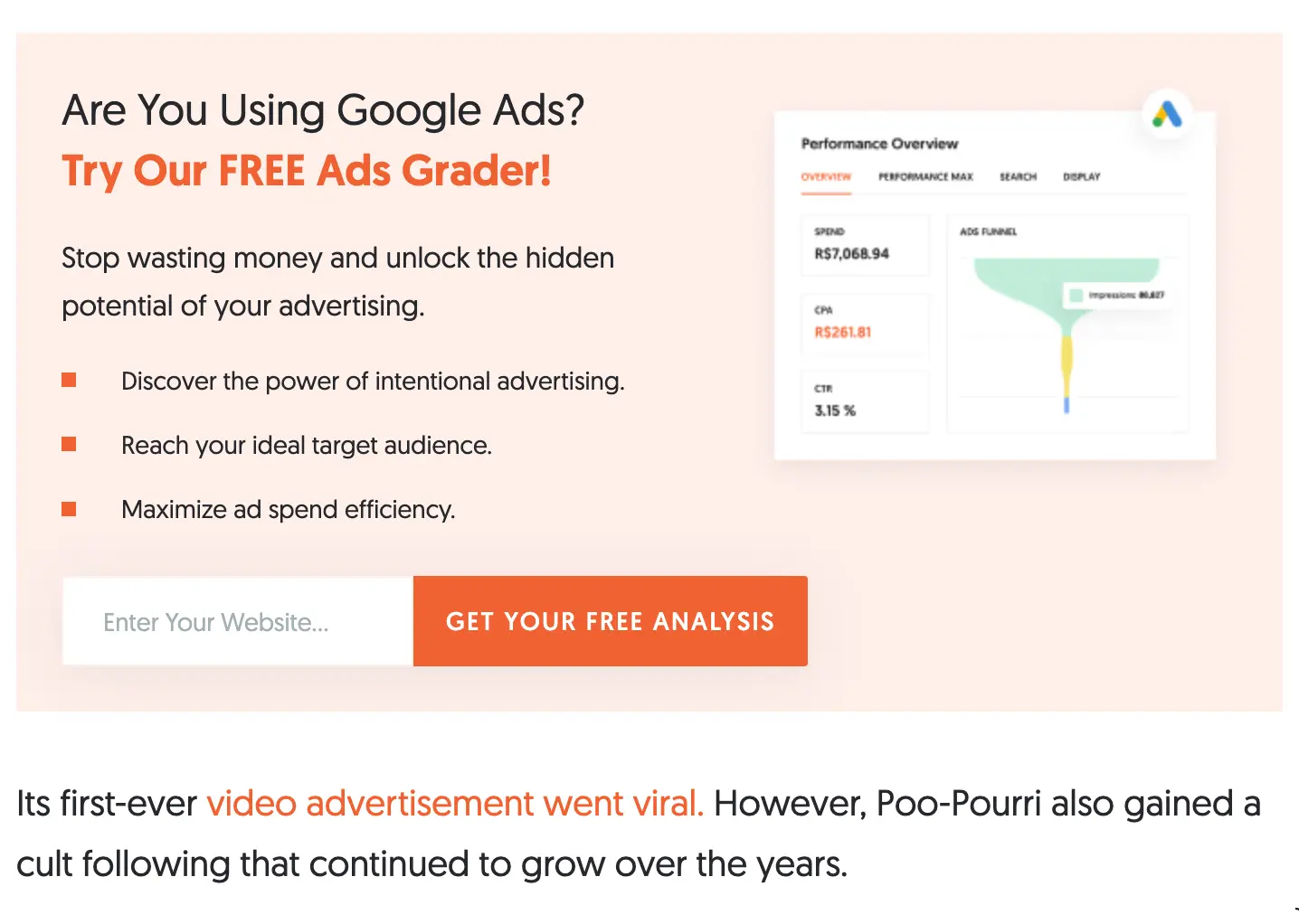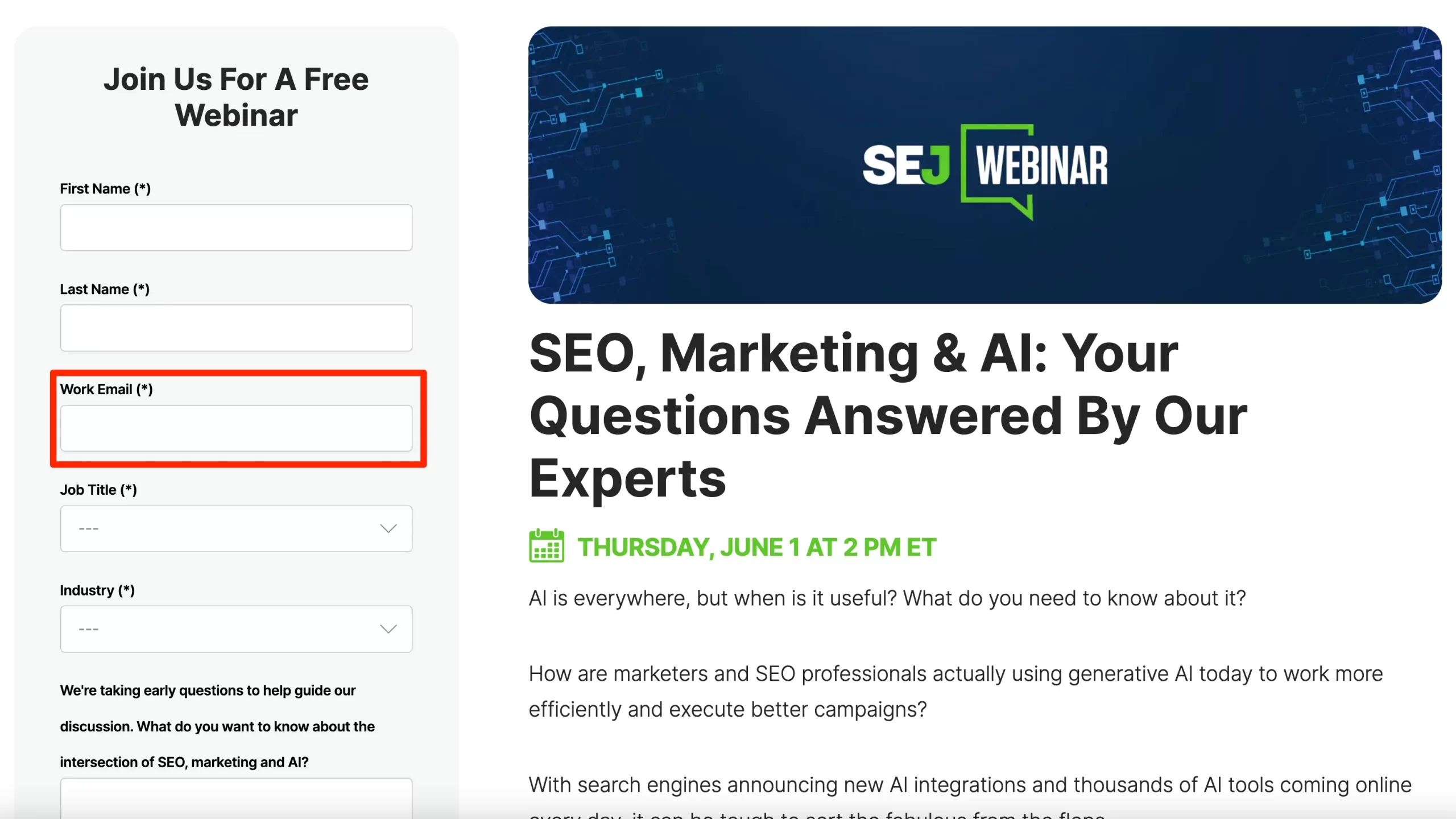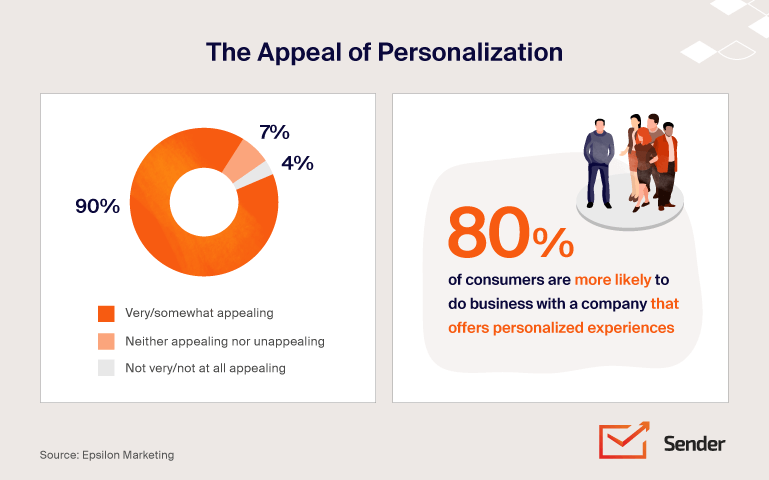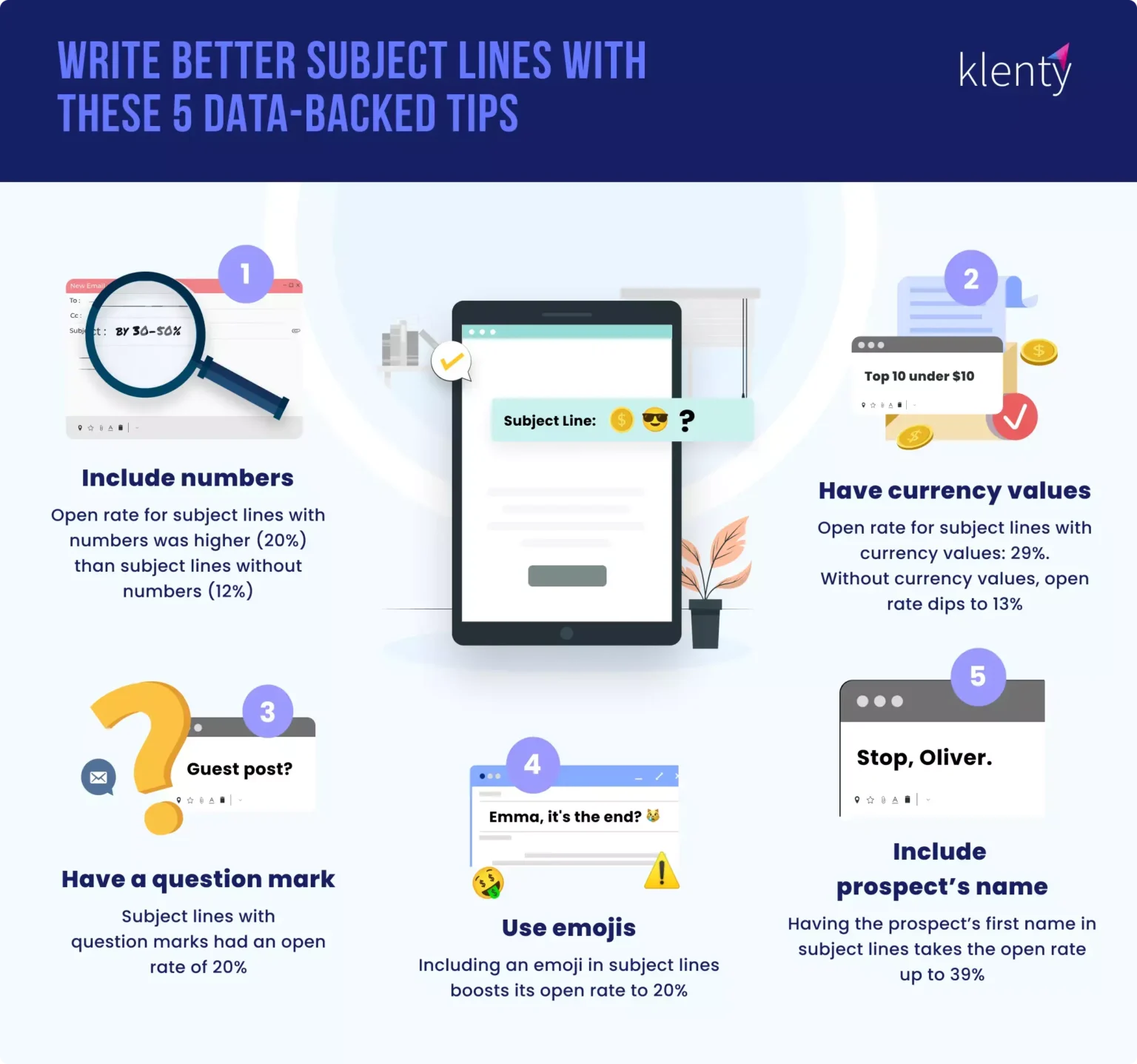This is the perfect guide for unlocking the potential and benefits of email marketing.
Written by experienced email marketers, this guide will equip you with the skills to master email marketing and drive real results.
You’ll learn how to grow an email list, build an email marketing strategy, and nurture and engage your audience effectively.
What is Email Marketing?
Email marketing is the marketing process of utilizing email messages to connect and nurture audiences.
Leveraged by B2B and B2C companies, email marketing helps to build brand awareness, strengthen customer loyalty, and drive conversions.
Though it might not be the newest form of marketing available today, email consistently delivers results.
The average company can earn $36 for every $1 spent on email marketing, and studies show that 66% of customers have made a purchase after receiving an email.
With a successful email marketing strategy, you can keep your business in the minds of your target audience and connect with customers throughout the purchasing cycle.
What’s more, email can deliver many other unique benefits when used correctly. With carefully crafted email campaigns, you can:
- Collect valuable customer data: As third-party cookies become a thing of the past, earning email subscribers is becoming the best way to collect data and insights about people interested in your products without underhanded tactics.
- Nurture leads: Email can help you convert website visitors into customers and brand advocates. With engaging, personalized content, you can build relationships with your target audience and increase average order values.
- Boost brand awareness: Email marketing campaigns allow companies to provide their customers with more information about their company, products, and services, building trust and credibility.
79% of marketers now list email as one of their most effective marketing channels.
Moreover, your email list is one of the few advertising resources you actually have ownership of as a brand.
While changes to social media and SEO algorithms can affect how you connect with customers in other regions online, you always have control over how you reach your subscribers with email.
How to Build an Email List
Developing a comprehensive email marketing strategy takes time, patience, and focus.
However, your email list is the first and most important element of any campaign.
Your list is the emails you capture from prospects and leads interested in your brand. The more people you add to this list, the more potential sales opportunities you have.
There are numerous ways to build an email list, from offering discounts and freebies and creating loyalty programs to hosting webinars and events.
Some of the most common methods include:
Lead magnets
Lead magnets are essential offers placed on landing pages, popups, and websites, designed to encourage customers to share their contact details in exchange for something of value.
The key to success is offering something that your customer believes is worth sharing their personal details to access.

Depending on your target market, you might offer access to reports or studies, eBooks, whitepapers, checklists, or even free tools.
Before creating your lead magnet, figure out who you’re targeting, what they need, and what their pain points might be.
Opt-in forms or pop-ups
Designed to grab customer attention with an offer or deal, opt-in forms and pop-ups encourage customers to join your list without using a landing page.
Ensure your opt-in forms have an attractive design and an attention-grabbing offer that captures the audience's attention and convinces them to interact with your brand.
Your opt-in forms and pop-ups should also have a clear CTA (Call to Action) focusing on the benefits of signing up for your newsletter.
Complementary marketing assets

Other marketing tactics used by companies to draw customers back to their list, such as:
- Social media posts: Encourage users to join your email list with social media posts highlighting the benefits available to subscribers.
- Loyalty campaigns: Ask your existing customers to recommend your newsletter to their friends in exchange for a reward (such as a discount).
- Webinars and podcasts: Host webinars, podcasts, or events to showcase your thought leadership and get people interested in your brand.
How To Select An Email Marketing Platform
Once you have your email list, you need a way to manage it. Email marketing platforms help with this.
Rather than manually organizing your contacts and campaigns on a standard email software (such as Gmail or Outlook), you can use your email marketing platform to create, send, track, and measure email marketing campaigns and strategies.
There are various great options to choose from in the market today, each with its own unique features, email templates, and pricing plans to offer.
While the exact functionality of any email marketing platform may vary, most include:
- List-building tools: Solutions for creating landing pages, opt-in forms, and other resources to help collect subscribers for your list.
- Segmentation: Tools for organizing your customers into specific groups based on their interests, purchases, demographics, and behaviors.
- Third-party integrations: Options to connect your email solution with your content management system (CMS), customer relationship management tools, and more.
- Automation: Workflows and autoresponders for instantly connecting with customers according to a specific strategy (welcome emails, transaction emails, etc.)
- Tracking and reporting tools: End-to-end reporting features for monitoring opt-in and opt-out rates, click-through rates, engagement, and more.
- Deliverability tools: Solutions for ensuring your emails end up in your customer’s inbox instead of in the spam folder.
The right email marketing platform for you will depend on numerous factors, including your budget (how much you can pay each month), your number of subscribers, and your technical knowledge.
The best solutions should have a positive reputation as an ESP (Email Service Provider) to improve deliverability rates, easy-to-use automation tools, and extensive A/B testing, reporting, and analytical features.
How To Create an Email Marketing Strategy
Once you have an email marketing platform and a list, it’s time to start building your strategy.
More than 306 billion emails are sent and received in the digital world each day, so you need a plan to ensure your content stands out in your customer’s inboxes.

Crucially, an email marketing strategy should be a dynamic tool – one that evolves with your brand as you learn more about your audience and marketplace.
To start building your own email marketing strategy:
Establish goals:
Define exactly what you want to accomplish with each email marketing campaign.
Your welcome emails may be designed to build credibility with customers, while transaction emails improve customer experience.
You can also create retargeting email campaigns intended to drive customers back to your website and product pages.
Explore campaign types:
Examine the various different types of campaigns you might create for different purposes.
You can create newsletters to keep customers up-to-date, autoresponders triggered by customer behavior, and specific marketing campaigns intended to draw attention to a specific offer or sale.
Create a schedule:
Decide how frequently you should contact your list, and create a schedule for automatically delivering content.
Data suggests that most companies should send between 10-19 emails each month.
However, the perfect frequency for your business will depend on the preferences of your target audience.
Design email templates:
Most email marketing tools will already have templates you can use for specific types of emails.
You might want to customize these with your own colors and branding. Creating templates will help you to maintain a consistent image throughout your campaigns.
Set metrics to measure:
Determine how you will validate the success of your email marketing campaigns.
You can track metrics like open rates to monitor engagement, opt-out rates to see whether you’re losing customer interest, and click-through rates to track the number of customers interacting with your emails.
Since creating an amazing email campaign is an iterative process, it’s worth being prepared to conduct a number of tests over time.
Use your email marketing tools to run A/B tests, tracking the performance of different types of copy, call-to-action buttons, subject lines, and offers so that you can optimize your ROI.
How To Send Effective Email Campaigns
There’s no one-size-fits-all guide to writing and sending the perfect email campaign.
The strategy that works for you will depend on your audience, your budget, and your goals.
You can improve your chances of success by:
Understanding your target audience
96% of marketers believe personalization improves the success of email marketing and reduces the cost of acquisition by 50%.

However, you can only adapt your campaigns to the needs and expectations of your target audience if you understand who you’re messaging.
Create comprehensive buyer personas outlining the psychographics, demographics, and behaviors of your customers.
Identify who your current customers are, who will benefit from your product or service, and why they should choose you over your competitors.
You can also use your buyer personas to decide on what kind of tone of voice you’re going to use in your emails and subject lines, what sort of content you’re going to share, and even how frequently you should send emails.
Segment your customers
Once you’ve defined your target audience, you’ll begin to notice different groups within your market, defined by things like their age range, location, and even their purchasing preferences.
Segmenting your audience into smaller groups allows you to create more relevant, customized content for each individual’s needs.
It’s up to you to define how you’re going to segment your customers, but some options include segmenting by:
-
- Demographic data: Age range, gender, location, and other characteristics.
- Activity: Segmentation based on their past activity. For example, you can target people who haven’t opened a campaign in the last three months with an offer to encourage them to engage with your emails.
- History: If you have existing customers in your email list, you can segment them according to their previous purchases, loyalty to your brand, and average order value.
Master your subject lines

Even with the best content in the world, your emails won’t drive results unless you convince people to open your emails.
The subject line is one of the most important tools you have in your email marketing strategy.
It needs to convince customers to open your email rather than ignore your messages or send it to the spam folder.
A/B testing subject lines is a great way to determine which strategies work best for your brand, but often, the best subject lines are:
- Personalized: A personalized email subject line featuring the name of your customer, or other details, can dramatically increase click-through rates.
- Short and clear: The best subject lines get straight to the point. The shorter your subject line is, the easier it is to read on mobile devices.
- Engaging: Your subject lines should give customers a reason to open your message, highlighting benefits, creating a sense of urgency, or taking advantage of a customer’s curiosity with questions are all good tactics.
Create engaging email content
Once your customers open your emails, they must be instantly convinced that they made the right choice to interact with you.
The easiest way to make sure your email content is effective is to ensure you’re delivering value.
Whether you’re sending a transactional email, newsletter, or autoresponder, your email should be informative and useful.
Experiment with various types of content messages to capture customer attention.
You can also optimize your content by:
- Pay attention to design: Make sure your emails are easy to read and navigate on any device (including mobile).
- Using CTAs: Use powerful CTA buttons and links to encourage customers to interact with your business. Ask them to visit your store, check out your latest blog posts, or follow you on social media.
How To Automate Email Marketing
In the past, creating email marketing campaigns for multiple individual audience segments was a time-consuming process.
Fortunately, today’s email marketing platforms come with automation tools, which allow you to streamline your campaign strategy.
Once you’ve created specific subgroups for your email list, you can use your email marketing tools to send messages to each group based on pre-defined rules.

Email marketing automation makes it easy to scale your advertising strategy, engage your readers consistently, and minimize manual tasks.
Some of the most effective forms of email automation you can utilize include:
Autoresponders: Autoresponders or drip campaigns are a series of emails sent out automatically once they’re triggered by a certain action, such as when someone subscribes to your list or downloads a lead magnet.
You can set each email to be delivered at a specific time to avoid overwhelming your audience.
Welcome emails: Welcome emails are automated one-off messages you send to your target audience to welcome them to your list.
They should tell customers what to expect from your business and email strategy.
Cart abandonment emails: Cart abandonment emails are another type of automated message designed to draw customers back to your website after they leave without making a purchase.
They can showcase the product they forgot to buy, using dynamic content and highlighting core benefits.
Email marketing tools also allow companies to create comprehensive “email workflows” for various other customer communication tasks.
You can send automated follow-up emails to a customer or notifications related to their order status.
Email Marketing Best Practices
Like many forms of digital marketing, the best practices and strategies associated with email marketing are constantly evolving.
You’ll need to stay up-to-date with market trends and customer insights to make the most of your campaigns.

However, there are some core do’s and don’ts you can follow to set your business up for success.
Do:
A/B test your emails:
Split testing or A/B testing is one of the best ways to determine which of your campaign strategies really work.
You can test everything from your subject lines to your CTA buttons and email offers.
Set marketing KPIs: Monitoring crucial email marketing KPIs will also help you to optimize your ROI from each campaign.
Track things like deliverability levels, open rates, click-through rates, and unsubscribes for every campaign.
Optimize user experience: Make sure your emails are easy to read and navigate on every platform.
60% of email communication happens via a mobile device today, so it’s important to ensure your templates are responsive.
Keep it brief: Don’t overwhelm your customers with too much content in an email.
Ensure each email has a simple, central message, and keep text to a minimum. You can always link customers to your website so they can find more information.
Get the timing right: Sending emails at the perfect time is a great way to increase open rates. Think about when your customers are likely to be active, online, and responsive to your messages, and schedule your campaigns accordingly.
Deliver value: Capture customer attention with valuable links to blog posts, videos, and statistics from your latest reports and offers.
Make sure customers actually look forward to receiving your messages by making them engaging.
Experiment: Play with your email strategies to learn more about your customer’s preferences.
Experiment with sender names, content, and even sending frequency, and track your results in your email marketing automation platform.
Don’t:
Ignore regulations:
Ensure your emails comply with regulations such as CAN-SPAM and GDPR to avoid getting into trouble with regulatory bodies and losing customers.
Ensure customers can unsubscribe if needed, and seriously consider using double opt-in to validate each email address you collect.
Send bulk, generic emails: As mentioned above, personalization is the key to a strong email marketing campaign.
Don’t send bulk generic emails to your entire email list at once. Segment your audience and send relevant content to each group.
Add too many links: While every email should include a couple of call-to-action links and buttons, adding too many links can overwhelm your reader. Try to stay focused on the goal of every message you’re sending.
Forget crucial information: Adding your contact information, privacy statement, and even social media links to your emails can make your messages look more professional and credible. It also ensures customers have a way to reach you.
Neglect email list cleaning: Regularly clean your email list by removing unsubscribed customers and people not interacting with your content.
Cleaning your email list will reduce your email marketing spend and ensure you focus on the right audience.
Learning Email Marketing
While email marketing might not be the newest marketing strategy in the digital world, it’s something that many companies continue to struggle with.
Email marketing best practices and strategies are constantly evolving, so even if you know how to create autoresponders and engaging content, it’s worth regularly updating your knowledge.
Fortunately, there are plenty of ways to expand your understanding of email marketing with tools and resources online. Some of the best options include:
- Blogs, articles, and eBooks: There are countless free educational resources available online covering the basics of email marketing. You can learn more about how to schedule your campaigns, create great subject lines, and even segment your audience from reputable marketers and business leaders.
- Webinars and events: Webinars and events dedicated to email marketing are another way to expand your knowledge and stay updated with some of the changes in the email marketing landscape. Some events are free to attend, while others require you to pay a small fee.
- Free training courses: Free courses and workshops on email marketing provide quick insights into the basics of email advertising. You can earn certifications and develop the practical skills you need to start experimenting with campaigns.
- Paid courses: Premium or paid email marketing courses provide more in-depth insights into the fundamental strategies and methods used in email marketing. They can teach you how to use automation tools, build workflows, collect data about your audience, and even improve your email list.
It’s also worth checking out posts and videos shared by thought leaders in the email marketing space for current insights into marketing campaigns.
Conclusion
Email marketing is still one of the most valuable forms of marketing available to businesses in today’s digital world. With the right email marketing strategy, you can engage and nurture your audience, convert customers into brand advocates, and increase sales.
However, it takes time and focus to make sure your email marketing strategy is successful. You’ll need to commit to regularly experimenting with your campaigns, testing new methodologies, and expanding your knowledge of the marketplace.



